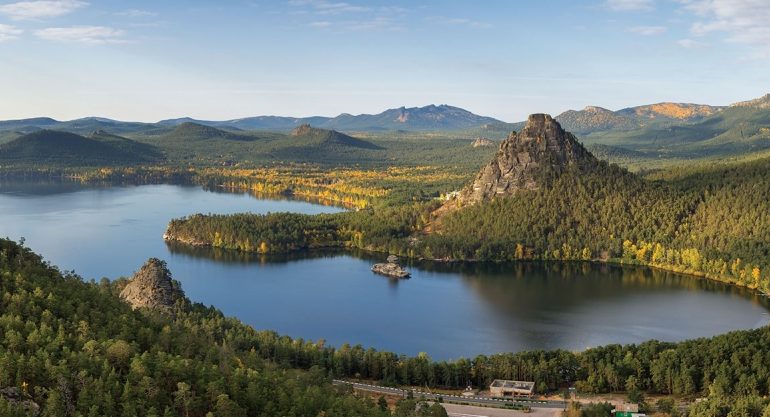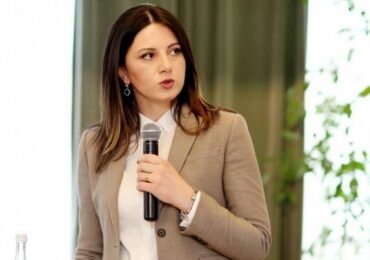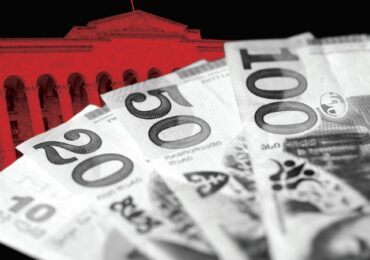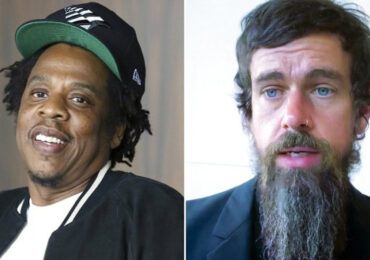Fourteen lakes in the heart of Kazakhstan inspire poets and welcome tourists.
A place that inspired poets and warriors. A kind of beauty you fall in love with at first sight. This is Borovoe, a remarkable place in the very center of the country.
UNIQUE NATURE
Borovoe (“Burabay” in Kazakh) is one of the oldest health resorts in Kazakhstan. In 1920, then a small village located amidst a unique system of lakes, it was recognized as a resort of national importance. Today it is Kazakhstan’s main recreational zone with developed tourist infrastructure. The annual number of Borovoe visitors ranges from 500,000 to 700,000 people. This figure is expected to exceed 1 million by 2020.
For many years during the Soviet period, the authorities harvested a unique breed of pine here. Fortunately, this activity later stopped, and in 2000, the Burabay National Park was created to protect the area’s natural beauty.
Many travelers compare the local landscape with the foothills of the Altay Mountains, while others refer to the area as “small steppe Tibet.” However, thanks to natural scientists and the region’s fans, Borovoe has become widely known as “the second Switzerland.”
For those looking for the one-of-a-kind snapshots Borovoe offers, there are 14 different large lakes. These include famous ones like the namesake Borovoe, Shchuchye, Big and Small Chebache, Katarkol and many smaller lakes as well.
According to scientists, the national park has the highest concentration of natural resources in the republic in one place. Thus, 65% of the area’s forest cover is pine, plus around 800 forest species, meadows and salt plants, some of which have medical value. The park is also home to more than 300 animal species, or36% of Kazakhstan’s total fauna.
IN SEARCH OF BALANCE
The main remaining issue for preserving Borovoe is the search for compromise between developing infrastructure for tourists and leaving nature intact. Significant investment went into the creation of “green” infrastructure for autonomous water consumption and power generation. In 2009, the republic’s most modern speedway was built from Astana to the resort. It shortened the journey to 2.5 hours. T
here are around 1,000 hotels, hostels, health centers and holiday camps in Borovoe. Many of them are economy-class hotels in which the room price per night does not exceed 10,000 tenge. The luxury sector is represented by the five-star Rixos Borovoe hotel, where a standard room will cost you 44,000 tenge a night.
Nevertheless, many special offers are available during the holidays. Early booking will also significantly reduce your expenses, and prices depend on the season. Borovoe is a year-round resort, but winter rates are much lower, with hotels offering discounts of up to 70%.
MAY KUMIS BE WITH YOU
Medical tourism became popular in Borovoe at the beginning of the 20th century, when Doctor Yemelyanov opened his private kumis health clinic, based on the dairy product made of mare’s milk. Clear lakes, surrounding mountains, woodlands with distinctly fresh pine air and steppe grass contributes to the effective climatic treatment. Back in the USSR, Borovoe was a place where astronauts recovered their strength, athletes prepared for championships and the Olympic Games, and politicians and artists restored their health.
Today people come here to treat diseases of the respiratory and gastrointestinal tracts, as well as the cardiovascular and musculoskeletal systems. Doctors get the chance to combine various methods of treatment, including kumis, water and mud therapy. The consumption of Kumis – a legendary traditional Kazakh drink – stimulates gastric acid production, which improves digestion and appetite, normalizes bile level and improves overall metabolism.
A LEGENDARY TOUCH
It would be a huge oversight to visit Borovoe without hiking.
The best indicator of good physical fitness would be to conquer the local Kokshetau summit (“Blue Mountain in Kazakh). Its peak is 947 meters above sea level. The best views over the Borovoe lakes are from Okzhetpes cliff. It is from here that the most impressive photos of the resort and national park, which grace books and websites, are taken.
The cliff is also the subject of many folktales. The most widely-known are three legends that tell the story of a strong young woman who chose freedom and tragically died in the waters of the lakes after jumping off the cliff. If you take a good look at Okzhetpes from the banks of the lake, you’ll see that its shape resembles a tall woman holding a handkerchief in her hand. Or anyway, this is what most tourists see.
There are 29 hiking trails and routes available all year within Borovoe National Park.
WINTER ACTION
The winter season in Borovoe is favorable for many activities. Over the past five years, the number of winter recreation centers here with ski slopes has quickly increased. Even hotels located far from ski resorts can arrange transfers to the ski slopes. There are no problems finding ski gear or English-speaking instructors.
Anyone visiting Borovoe in winter must stop by the local Santa Claus residence, a huge entertainment complex on the northern side of Shchuchye Lake that provides guests with tons of fun activities from December through February.
Winter is also the main season for medical tourism, which explains why popular health resorts are booked in advance starting from fall.
Whenever you choose to visit Borovoe, you are guaranteed to bring back memories that will remain with you for your entire life. The resort is one of those places where you want to come back to over and over again.












